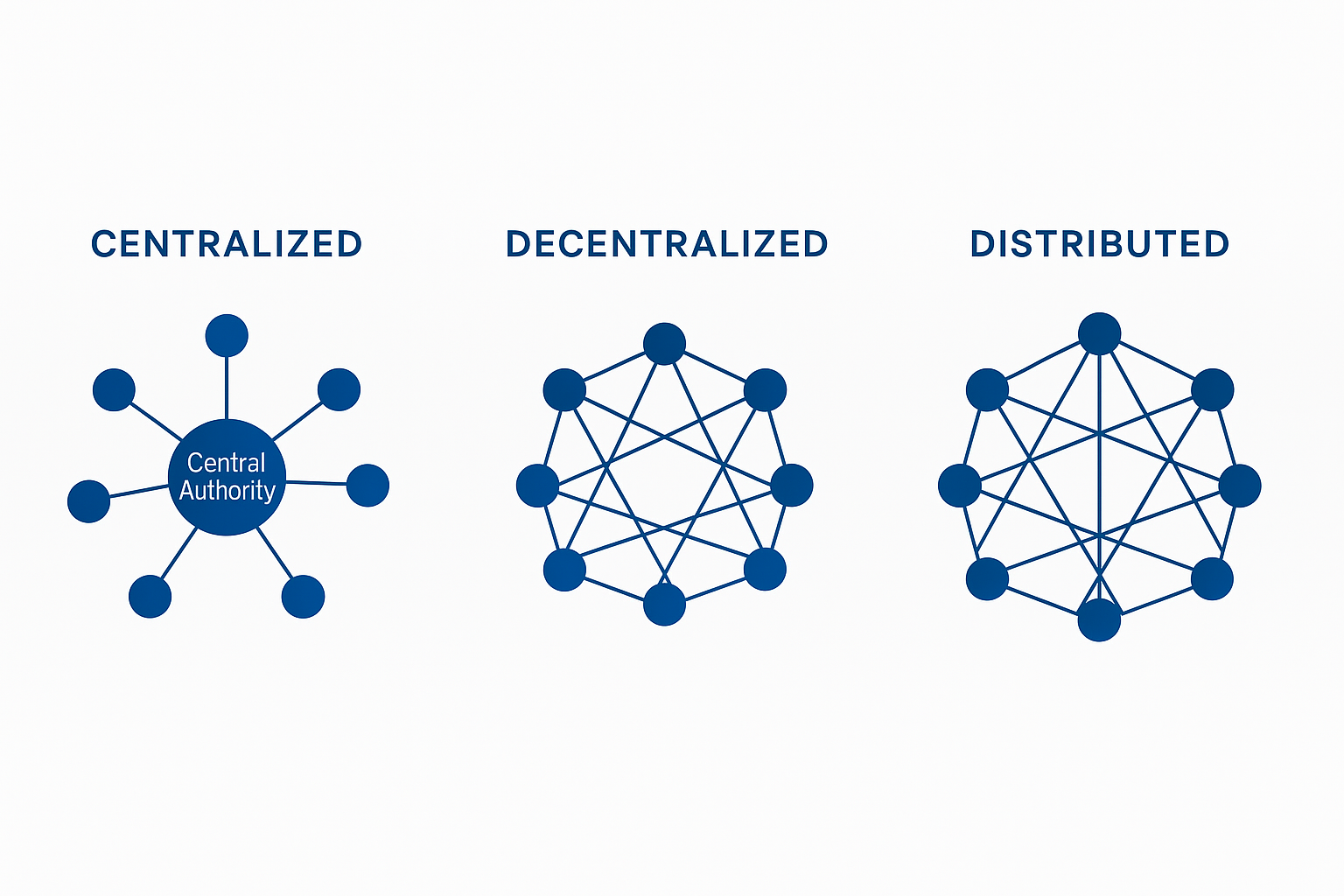Difference Between Centralized And Decentralized Distribution System

Centralized Systems
One central authority or server is in charge of all system management in a centralized system. This center node is the conduit for all data, decision-making, and control. Direct connections are made by clients, who depend on it for processing, communication, and validation. Centralized setups have single points of failure and are susceptible to manipulation or outages, despite being easy to design and effective for small-scale systems.
You can also read Hyperledger Fabric News: Seamless Upgrade Guide
Distributed Systems
Data and computation activities are Distributed among several nodes or locations in a distributed system. Together, these nodes show users a cohesive structure. Even if they are dispersed, a central authority may still hold power. Although they present difficulties with synchronization and consistency management, distributed systems are perfect for worldwide services because to their high scalability and fault tolerance.
Decentralized Systems
Control and decision-making are distributed among several separate nodes in a decentralized system. Participants function peer-to-peer rather than under a single central authority. Concurrence processes, which offer immutability, transparency, and trust, are used to validate decisions and transactions. This strategy is crucial to systems like blockchain because it encourages anonymity, trustless communication, and resistance to censorship.
You can also read Understanding Blockchain Scalability Problem And Solutions
Differences
| Feature / Aspect | Centralized System | Distributed System | Decentralized System |
|---|---|---|---|
| Control Authority | Single central authority | Can be centralized or partially centralized | No central authority; control is shared |
| Data Storage | Stored on one central server | Spread across multiple nodes | Spread across nodes, each maintaining their own state |
| Communication | Via central server | Message forwarding between nodes | Peer-to-peer interaction |
| Fault Tolerance | Low – single point of failure | High – one node failing doesn’t crash the system | Very high – resilient to node failures |
| Scalability | Limited; becomes inefficient at large scale | High horizontal scalability | Depends on consensus model; can be challenging |
| Transparency | Low; users must trust central authority | Varies; often low unless made transparent by design | High; records and actions are visible and immutable |
| Trust Mechanism | Based on trust in central authority | Trust in central operator | Based on consensus and cryptographic validation |
| Decision-Making | Central authority makes all decisions | Central or collaborative among nodes | Collective through consensus |
| Examples | Bank database, Facebook, Traditional ERP systems | Cloud services (e.g., Google Search), CDN, DNS | Bitcoin, Ethereum, DApps |
| Security Concerns | Susceptible to hacking and internal compromise | Better, but still vulnerable to central authority flaws | Highly secure due to cryptography and distributed consensus |
| Latency in Processing Requests | Low (in small scale), but becomes bottleneck at scale | Moderate | Can be high due to consensus time |
| Monopoly Risk | High – owned by one organization | Possible – still can be monopolized | Low – decentralization prevents monopoly |
| System Design Complexity | Easier to design and maintain | Complex due to synchronization and consistency issues | Complex due to trustless design, consensus, and redundancy |
You can also read What Is Quorum Blockchain, Architecture And Features
